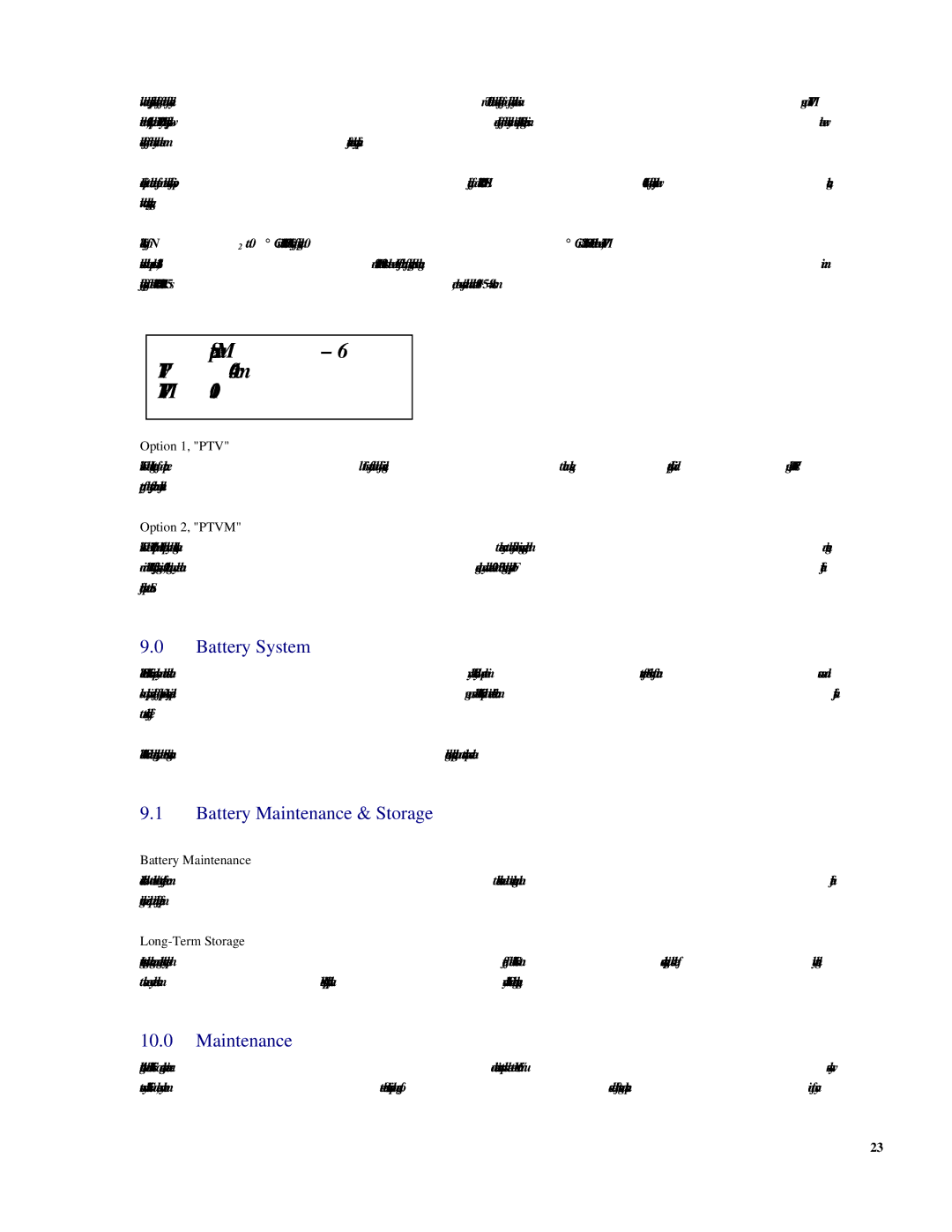
will alter the
For example, to calculate the effect on the
The viscosity of N2 at 0° C is 165.31 microPoise. The viscosity of hydrogen at 0° C is 83.21 microPoise. To determine the new PTVM, these should be expressed as 165.31/83.21, or 1.988. Enter 1.988 as the new LCF for calibration of hydrogen. Since the original minimum flow specification of the Cal=Trak Model
Setup Menu – 6
PTV 0.460 ccm
PTVM 1.000
Option 1, "PTV"
This is the Leakage rate of a particular cell. It is factored into all flow readings to obtain a
Option 2, "PTVM"
This is the PTV Multiplier, and is multiplied by the Leakage value to enhance accuracy at lower flows when using gases other than nitrogen or air. The LCF factory setting is 1.000, although it may be changed to any value between 0.200 and 3.00 using the keypad. For further information, please contact Sierra.
9.0Battery System
The Sierra Cal=Trak is powered by an internal
The Cal=Trak can be charged by the Sierra single station charger when plugged into a standard power source outlet.
9.1Battery Maintenance & Storage
Battery Maintenance
Long-Term Storage
10.0Maintenance
Although the Sierra Cal=Trak is a rugged instrument, certain care and maintenance requirements must still be met. When not in use always store your Cal=Trak in a clean, dry environment. Sierra Instruments provides a range of cases ideal for storage and transportation of your
23
